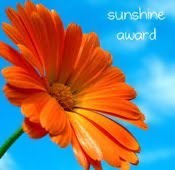Hello, all! I know that it's been quite a while since I've written a legitimate post, so I thank you for your patience and loyalty. You know how life can be sometimes... It can really make it hard for us ADD afflicted to focus on ANYTHING, let alone a blog! But enough about that!
I'm excited to share with you a new (old) children's book that I recently got at a local used bookstore. The book is titled, 'Vision - How, Why and What We See' and it is one in a series of books called the 'Golden Library of Knowledge'. 'Vision' was printed in 1962, and I think the charming illustrations (by Weimer Pursell) depict that. Here, take a look at some of them, beginning with the book's cover...
 |
I really dig this cover! The combination of the colors used and the stylization of the image make it very pleasing to the "eye". |
 |
Outer organs of the eye serve a primarily protective purpose. |
 |
The convergence of the telephone lines, the decreasing size of the poles, and the haziness of the more distant buildings help to create perspective. |
 |
White light entering a prism breaks down into the colors of the spectrum, as seen above. It is possible for an inverted prism to recombine the spectrum into white light again. |
 |
Color-blind people are unable to see the red O and purple X, above. |
 |
Many birds have keener vision than we have. The hunting birds - vultures, hawks, and shrikes - can spot very small animals on the ground hundreds of feet below them. |
 |
The Snellen Eye Chart, above, was designed to aid all who train in testing distance vision against an accepted norm. |
So did you have fun learning tidbits about vision in the Golden Library of Knowledge? I thought you might! Be sure to come back next time Retro Book Fair stops by the circus... I have a pretty good feeling even more vintage fun is in store! Meanwhile, have a wonderful weekend, everybody!!














Retro Book Fair is not only cool, but a real treat into the past! Looking forward to more neat-o capeto books!!!
ReplyDeleteMaria T. :-)
That's a very pleasing close-up of the eye. Is the eyebrow an "outer organ?" (just kidding)
ReplyDeleteAnd BTW, I can see the red O and the purple X, so I am NOT color blind! I didn't even cheat! Very cool post and I already love Retro Book Fair. :)
Anthony, I laughed when I saw the colorblind test! I remember my grade school teacher saying it mostly affected boys and I felt so left out,cuz the test was cool and I wanted to take it! (Boys got all the cool stuff)
ReplyDelete